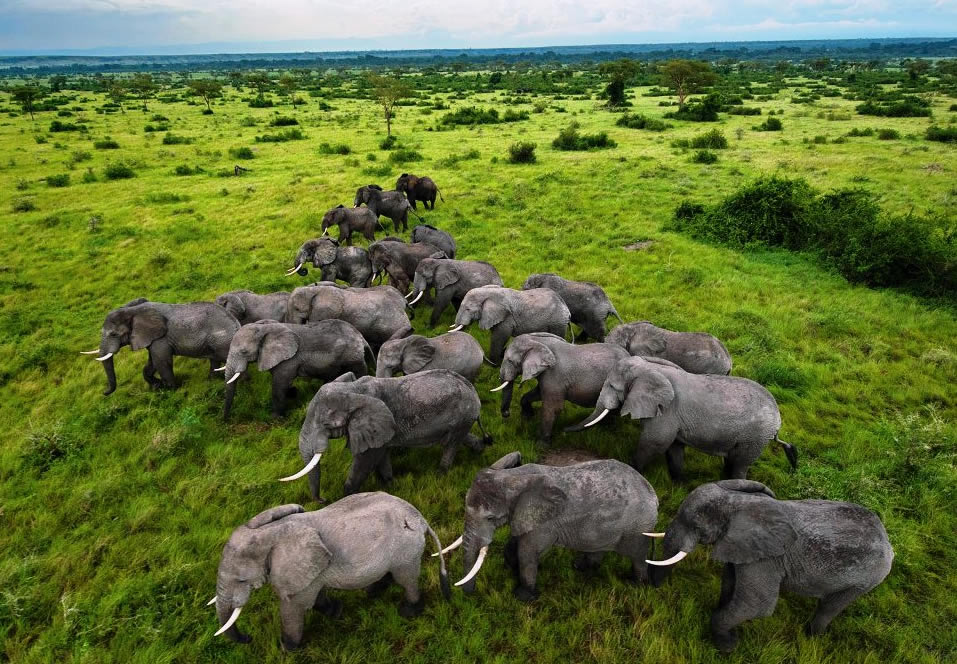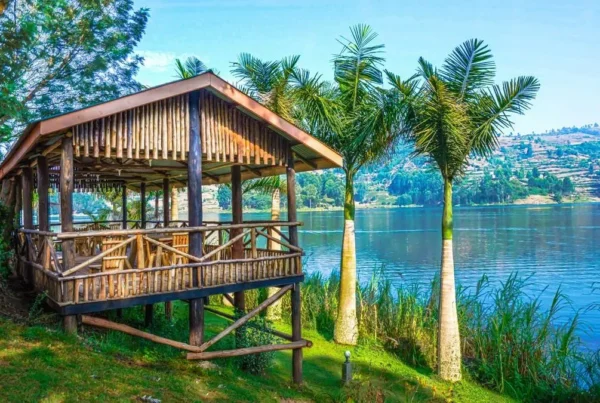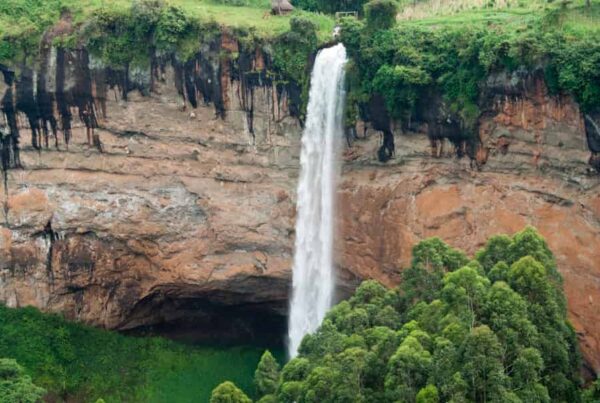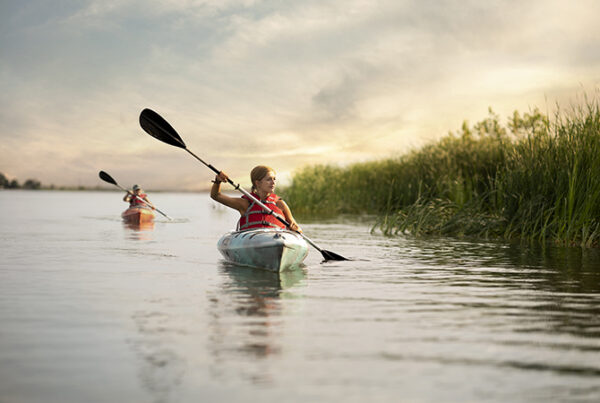A Safari Guide to Queen Elizabeth National Park in Uganda
A Jewel of Africa’s Wilderness
In the heart of western Uganda lies one of the most captivating treasures of East Africa—Queen Elizabeth National Park. This sprawling protected area, covering nearly 2,000 square kilometers, is not just a sanctuary for wildlife but also a realm where nature, culture, and history intertwine. To many travelers, the very name sparks images of vast savannahs where elephants roam, of mysterious crater lakes glistening under the equatorial sun, and of the legendary tree-climbing lions that have made the park world-famous. To visit Queen Elizabeth National Park is to immerse oneself in a story that nature has been writing for millennia, a story whose chapters are told through roaring lions, grazing antelopes, volcanic landscapes, and the rhythmic flow of the Kazinga Channel.
The park’s prestige does not rest merely on its sheer size or its wide variety of ecosystems but also on its unparalleled biodiversity. More than 95 mammal species and over 600 species of birds find refuge here, making it one of the richest natural havens in Africa. For decades, the park has drawn travelers from around the globe, eager to encounter both its raw wilderness and its scenic beauty. Yet Queen Elizabeth National Park is not only a destination for wildlife enthusiasts. It is also a canvas on which Uganda’s cultural heritage, history, and geographical wonders are painted in vivid hues.
This safari guide is designed to provide an in-depth understanding of the park, from its landscapes and wildlife spectacles to the activities that define the safari experience. By the end, readers will not only be equipped with knowledge but will also feel an irresistible call to set foot on this timeless land.
Location and Geography of Queen Elizabeth National Park
The park is located in the western region of Uganda, straddling the districts of Kasese, Rubirizi, Kamwenge, and Rukungiri. Nestled against the backdrop of the Rwenzori Mountains, often called the “Mountains of the Moon,” it stretches from the shores of Lake George in the northeast to the shores of Lake Edward in the southwest, with the Kazinga Channel acting as the life-giving artery that connects the two.
What makes Queen Elizabeth National Park particularly remarkable is its dramatic diversity of landscapes. Unlike many parks that are dominated by a single ecosystem, this park is a mosaic of habitats—savannah grasslands dotted with acacia, lush wetlands, crater lakes, volcanic cones, dense forests, and expansive swamps. This ecological variety is the foundation upon which its extraordinary biodiversity thrives.
Beyond its natural attributes, the park also occupies a strategic position along the Albertine Rift, a region that has been shaped by powerful geological forces. Evidence of volcanic activity is scattered throughout, with more than a dozen crater lakes shimmering in craters carved by ancient eruptions. These unique geological formations not only add to the park’s beauty but also contribute to its rich ecological makeup.
A Brief History of the Park
The story of Queen Elizabeth National Park is as intriguing as its natural allure. It was first gazetted in 1952 as Kazinga National Park, in recognition of the Kazinga Channel that is central to its identity. Two years later, in 1954, the park was renamed Queen Elizabeth National Park to honor a visit by Queen Elizabeth II of Britain.
Yet behind the official designation lies a history deeply interwoven with local communities. For centuries, the Basongora, Bakonzo, and Banyankole peoples lived around these fertile lands, practicing cattle grazing, fishing, and small-scale farming. Their traditional lifestyles were inevitably altered when the park was formally established, and to this day, conservation efforts continue to balance wildlife protection with community needs.
During Uganda’s turbulent political past, the park faced significant challenges. Poaching, encroachment, and political instability once threatened its survival. However, in recent decades, restoration and conservation programs have revitalized the park, restoring its global reputation as one of Africa’s premier safari destinations. Today, it stands not only as a wildlife sanctuary but also as a testament to Uganda’s resilience and commitment to conservation.
Wildlife of Queen Elizabeth National Park
Mammals and Predators
The park is home to an astonishing diversity of mammals. Large populations of African elephants, buffaloes, hippos, and antelopes roam its vast plains, creating the quintessential safari experience. Yet what truly elevates the park’s fame are its tree-climbing lions of the Ishasha sector. Unlike lions elsewhere, these extraordinary predators are often spotted lounging in the branches of fig trees, an unusual behavior that has baffled scientists and fascinated tourists alike.
Other predators include leopards, hyenas, and side-striped jackals, each playing their role in the delicate balance of the park’s ecosystem. For many safari-goers, witnessing the raw power of a lion hunt or the elusive elegance of a leopard is a highlight that etches itself into memory.
Birdlife: A Paradise for Ornithologists
If there is one feature that sets Queen Elizabeth National Park apart, it is its incredible bird diversity. With over 600 species recorded, the park ranks among the finest birdwatching destinations in Africa. From the African fish eagle soaring above the Kazinga Channel to the rare shoebill stork lurking in papyrus swamps, the avian variety is astounding. Migratory species from Europe and Asia also add to the seasonal spectacle, making birding safaris a rewarding pursuit year-round.
Aquatic Riches
The waters of the Kazinga Channel teem with hippos, crocodiles, and a dazzling array of aquatic birds. The channel’s banks are often lined with elephants and buffaloes coming to drink, creating a theater of life that captivates all who embark on a boat safari. These water-based ecosystems remind visitors that the park’s vitality is not confined to its grasslands but flows also through its rivers and lakes.
Key Attractions of Queen Elizabeth National Park
The Kazinga Channel
No visit to Queen Elizabeth National Park can be considered complete without experiencing the Kazinga Channel. Stretching for about 40 kilometers, this natural waterway is a hub of wildlife activity. Boat cruises along the channel offer a front-row seat to one of Africa’s greatest wildlife spectacles, where hippos jostle for space, crocodiles bask on the shores, and elephants arrive in majestic processions to drink.
Ishasha Sector
The Ishasha plains in the southern part of the park are where the famed tree-climbing lions reign supreme. Here, the landscape shifts into expansive savannahs where fig trees stand like sentinels. It is among their branches that lions are seen draped lazily, surveying the plains for unsuspecting prey. The Ishasha sector is also home to large herds of Uganda kob, topi, and buffalo, ensuring predators never wander far.
Kyambura Gorge
Sometimes referred to as the “Valley of the Apes,” Kyambura Gorge offers an entirely different safari dimension. This lush, forested gorge is a haven for chimpanzees, and guided treks into the gorge reveal a hidden world where primates swing from tree to tree. The experience of hearing chimpanzees vocalize in the dense forest resonates with an intensity that no traveler forgets.
Crater Lakes and Volcanic Landscapes
The northern sectors of the park are dotted with spectacular crater lakes formed by ancient volcanic activity. Lakes like Katwe and Nyamunuka are not only scenic marvels but also sites of traditional salt mining that has sustained local communities for generations. The crater lakes reflect the harmonious coexistence of human culture and natural beauty.
Activities in Queen Elizabeth National Park
Game Drives
Traditional game drives remain the backbone of the safari experience. They are usually conducted in the early morning or late afternoon when animals are most active. Traversing the park’s tracks unveils herds of antelope grazing, elephants moving in family groups, and predators stealthily patrolling their territories. Each drive feels different, and the unpredictability is what makes the adventure exhilarating.
Boat Safaris on the Kazinga Channel
The boat cruise on the Kazinga Channel is widely regarded as the park’s signature activity. The water’s edge becomes a microcosm of the park itself, where life converges. The proximity to animals, the sound of bird calls echoing over the water, and the setting sun painting the channel gold create moments that linger long after the journey ends.
Chimpanzee Tracking in Kyambura Gorge
For visitors yearning for a more immersive adventure, trekking into Kyambura Gorge to encounter chimpanzees is unparalleled. Guided by expert trackers, visitors navigate dense forests where the air is thick with the sounds of birdlife and rustling leaves. The reward comes in the form of intimate encounters with chimpanzee families, whose human-like behaviors often leave travelers in awe.
Cultural Encounters
Safaris in Queen Elizabeth National Park are not confined to wildlife alone. Engaging with local communities adds cultural depth to the journey. Visits to salt-mining villages near Lake Katwe, or dance performances by local groups, provide insights into the traditions that have been nurtured for centuries around the park. These experiences underscore that the richness of Queen Elizabeth National Park lies not only in its wildlife but also in the spirit of its people.
Best Time to Visit
Queen Elizabeth National Park can be visited throughout the year, yet the dry seasons from June to September and December to February are generally considered ideal. During these months, wildlife congregates around water sources, making sightings more predictable. Roads and tracks also remain more navigable, ensuring smoother game drives.
The wet seasons from March to May and October to November bring their own unique rewards. The park turns into a lush paradise, birdlife becomes especially vibrant, and the landscapes glow with renewed vitality. Though some areas may become challenging to access, the rewards of fewer crowds and spectacular scenery make the rainy season a worthwhile choice for adventurous travelers.
Conservation Efforts and Challenges
Like many of Africa’s great parks, Queen Elizabeth National Park faces ongoing challenges in balancing conservation with human activity. Poaching, human-wildlife conflict, and land encroachment have been persistent issues. However, partnerships between the Uganda Wildlife Authority, international conservation organizations, and local communities have led to significant improvements.
Community-based conservation programs ensure that residents living around the park benefit from tourism revenue, creating incentives for coexistence. Anti-poaching patrols, habitat restoration, and awareness campaigns continue to safeguard the park’s treasures for future generations. The growing emphasis on sustainable tourism ensures that every visitor contributes to the park’s preservation.
Why Queen Elizabeth National Park Stands Apart
What makes Queen Elizabeth National Park exceptional is not simply the abundance of wildlife or the beauty of its landscapes but the way it combines all elements of a safari into a single destination. It is a place where one can witness lions in the treetops, elephants crossing crater plains, hippos grunting in river channels, and chimpanzees thriving in forested gorges—all within a single park.
Few destinations in Africa offer such a comprehensive safari tapestry. The diversity ensures that every day in the park feels different, every drive reveals new wonders, and every sunset paints an unforgettable picture. To journey into Queen Elizabeth National Park is to experience the essence of Africa distilled into one magnificent location.
Your Safari Awaits
Queen Elizabeth National Park is not just a park; it is a living story of nature, culture, and conservation. It embodies the majesty of Uganda’s wilderness, offering a safari that is at once thrilling, educational, and profoundly moving. To step onto its landscapes is to step into a realm where nature still reigns supreme, where every sunrise brings the promise of discovery, and where the wild spirit of Africa beats with unbroken rhythm.
For travelers seeking an authentic African safari that combines breathtaking wildlife encounters, geological wonders, and cultural richness, Queen Elizabeth National Park emerges as an unrivaled choice. Its diversity, accessibility, and unique attractions ensure that every journey here is transformative.
To ensure that this journey is as seamless and enriching as possible, it is highly recommended to book Africa tours and safaris through WildHorn Africa. With expertise in curating unforgettable adventures and a commitment to responsible tourism, WildHorn Africa stands as the trusted gateway to experiencing Queen Elizabeth National Park in its fullest grandeur.





 WildHorn Africa – Authentic and unforgettable tours across Africa, guided by local experts who know the land, wildlife, and culture best.
WildHorn Africa – Authentic and unforgettable tours across Africa, guided by local experts who know the land, wildlife, and culture best.


